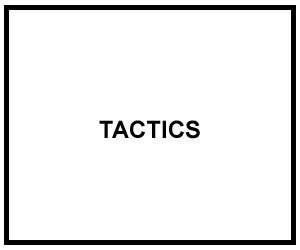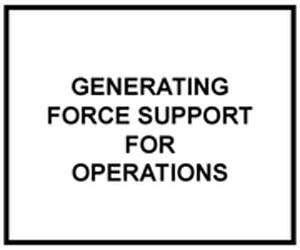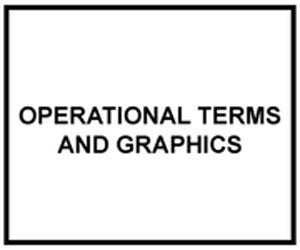
FM 3-90: TACTICS
Official US Army Field Manual in Acrobat PDF file format.
Doctrine provides a military organization with a common philosophy, a language, a purpose, and unity of effort. Tactics is the art and science of employing all available means to win battles and engagements. Specifically, it comprises the actions taken by a commander to arrange units and activities in relation to each other and the enemy.
FM 3-90 introduces the basic concepts and control measures associated with the art of tactics. It cannot be read in isolation. To understand FM 3-90, the reader must understand the operational art, principles of war, and links between the operational and tactical levels of war described in FM 3-0, Operations. He should understand how the activities described in FM 3-07, Stability Operations and Support Operations, carry over and affect offensive and defensive operations and vice versa. He should understand the operations (plan, prepare, execute, and assess) process described in FM 6-0, Command and Control, and how that process relates to the military decision making process and troop-leading procedures described in FM 5-0, Army Planning and Orders Production. FM 3-90 also refers to joint publications (JPs). Reviewing referenced JPs will also aid in understanding FM 3-90.
FM 3-90 focuses on the tactics used to employ available means to win in combat. Those tactics require judgment in application. The ability to seize and secure terrain, with its populations and productive capacity, distinguishes land forces conducting decisive offensive and defensive operations. FM 3-90 provides a common discussion of how commanders from the battalion task force level through the corps echelon conduct tactical offensive and defensive operations and their supporting tactical enabling operations. It is not prescriptive, but authoritative. Tactical fundamentals do not change with the fielding of each new piece of equipment. However, the integration of new equipment and organizations usually requires changes in related techniques and procedures. FM 3-90 provides guidance in the form of combat-tested concepts and ideas modified to exploit emerging Army and joint capabilities.
FM 3-90 focuses on the organization of forces, minimum essential control measures, and general planning, preparation, and execution considerations for each type and form of combat operation. It is the common reference for all students of the tactical art, both in the field and the Army school system. A family of subordinate manuals address the techniques and procedures used by tactical combat forces at each echelon. Assessment concepts described in FM 6-0 and FM 6-22, Army Leadership, also apply. All operations process considerations are modified as necessary to account for the specific factors of METT-TC existing during each operation.
Tactical enabling operations and special environments discussed in other manuals are not repeated in FM 3-90. That is why FM 3-90 does not discuss why information operations (FM 3-13), river-crossing operations (FM 3-97.13), and combined arms breaching operations (FM 3-34.2).
Readers of FM 3-90 should be aware that the rules regarding the use of land mines are evolving. A commander should seek legal guidance concerning currently applicable rules and policies regarding land mines before directing their employment. The rules of engagement he provides to his subordinates should reflect those guidelines.
The historical examples used in FM 3-90 were deliberately chosen to illustrate the fact that American tacticians should widen their areas of study of the military profession to include other armies and other times.
In FM 3-90, the term heavy applies to armored, aviation, cavalry, mechanized infantry and their associated combined arms elements. The term light applies to airborne, air assault, and light infantry and their associated combined arms elements. The term special operations forces applies to rangers, special forces, special operations aviation, civil affairs, and psychological operations elements. The initial brigade combat teams (IBCTs) are the prototypes of a medium force and are included in the discussion of heavy and light forces as appropriate. In FM 3-90, the term battalion applies to a battalion, battalion task force, or a cavalry squadron unless differences in capabilities requires that a specific organization be named. The term company refers to a company, company team, battery, or troop size organization.
FM 3-90 uses planning process to indicate both the military decision making process and troop leading procedures. Battalion-sized and larger units use the military decision making process. Company-sized and smaller units follow troop leading procedures.
Unless otherwise stated, whenever FM 3-90 uses the singular form of decisive operation or shaping operation; both the singular and plural forms are included. The glossary lists most terms used in FM 3-90 that have joint or Army definitions. Terms for which FM 3-90 is the proponent manual (the authority) are indicated with an asterisk. Definitions for which FM 3-90 is the proponent manual are printed in boldface in the text. For other definitions the term is italicized and the number of the proponent manual follows the definition.
File download size: 8 MB



